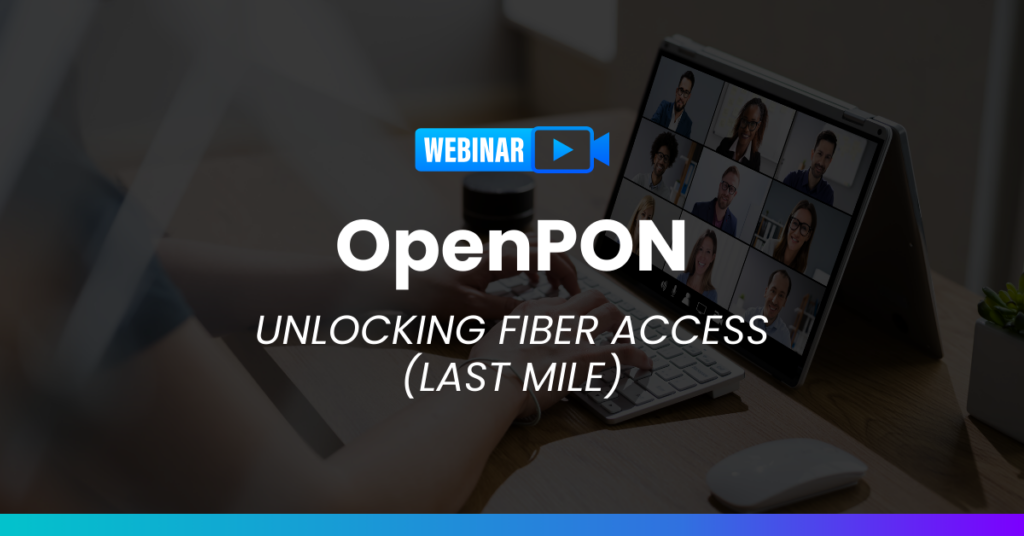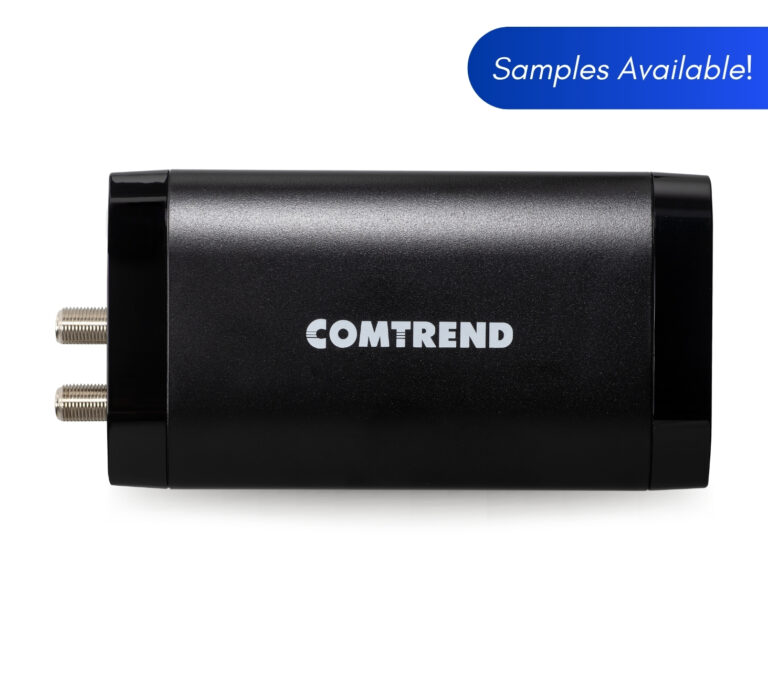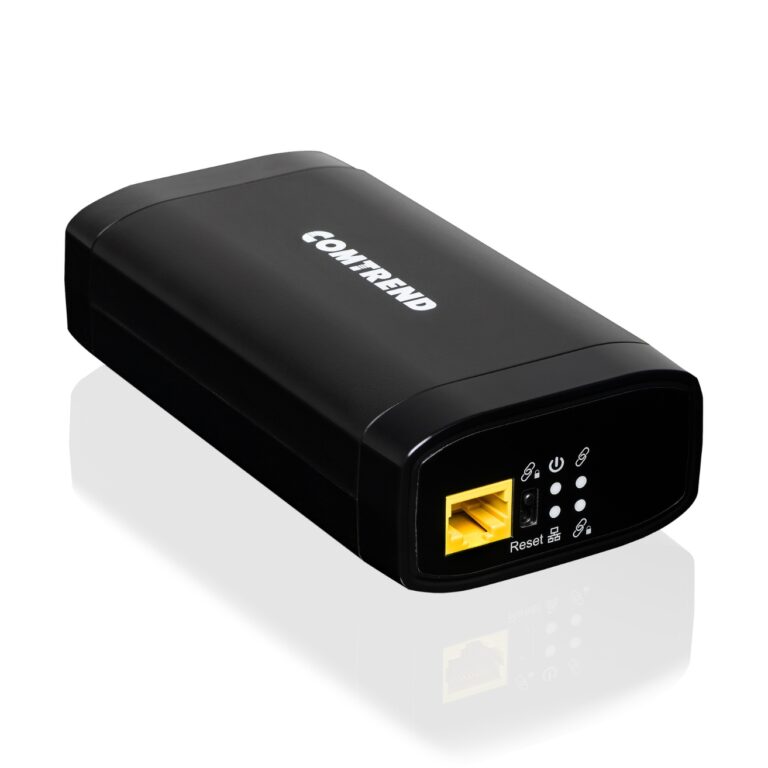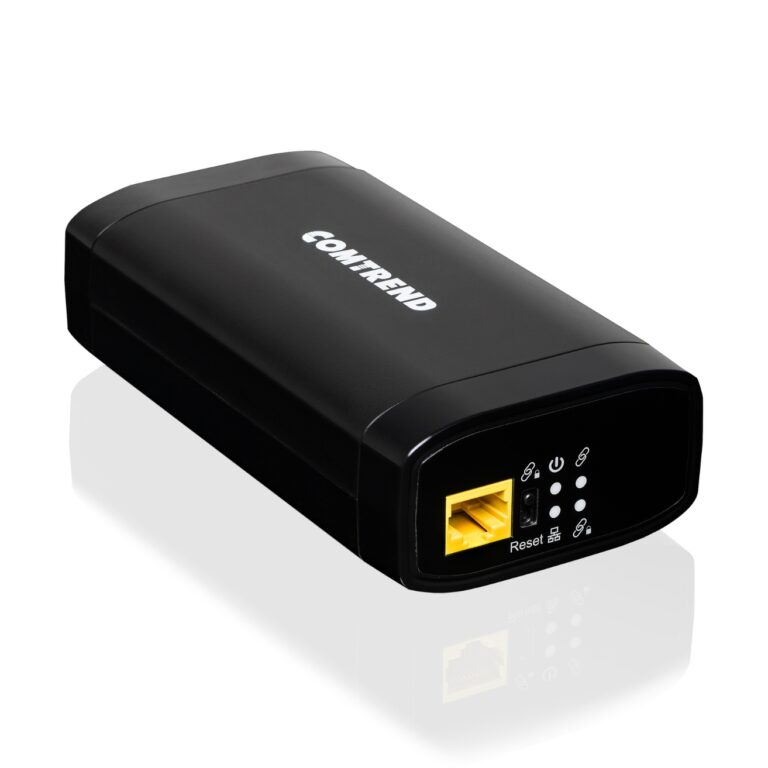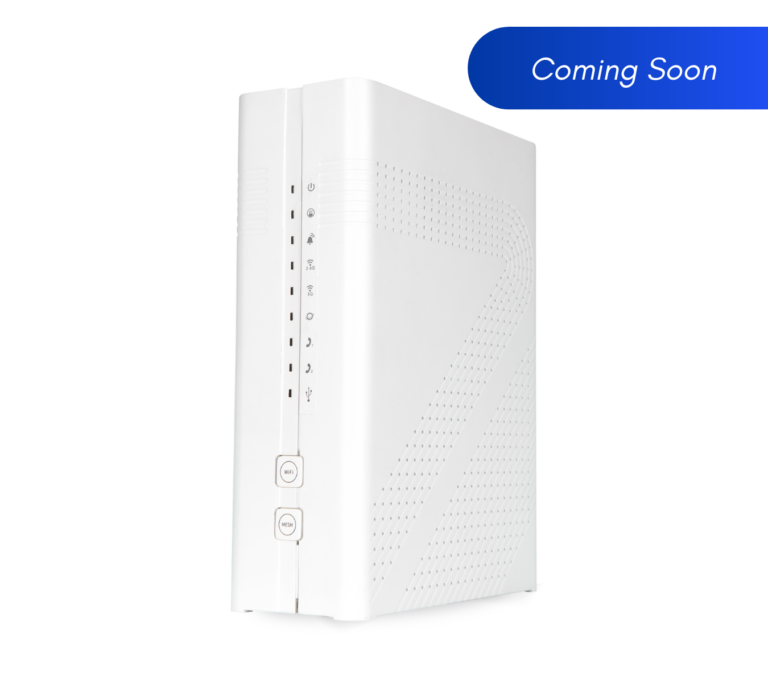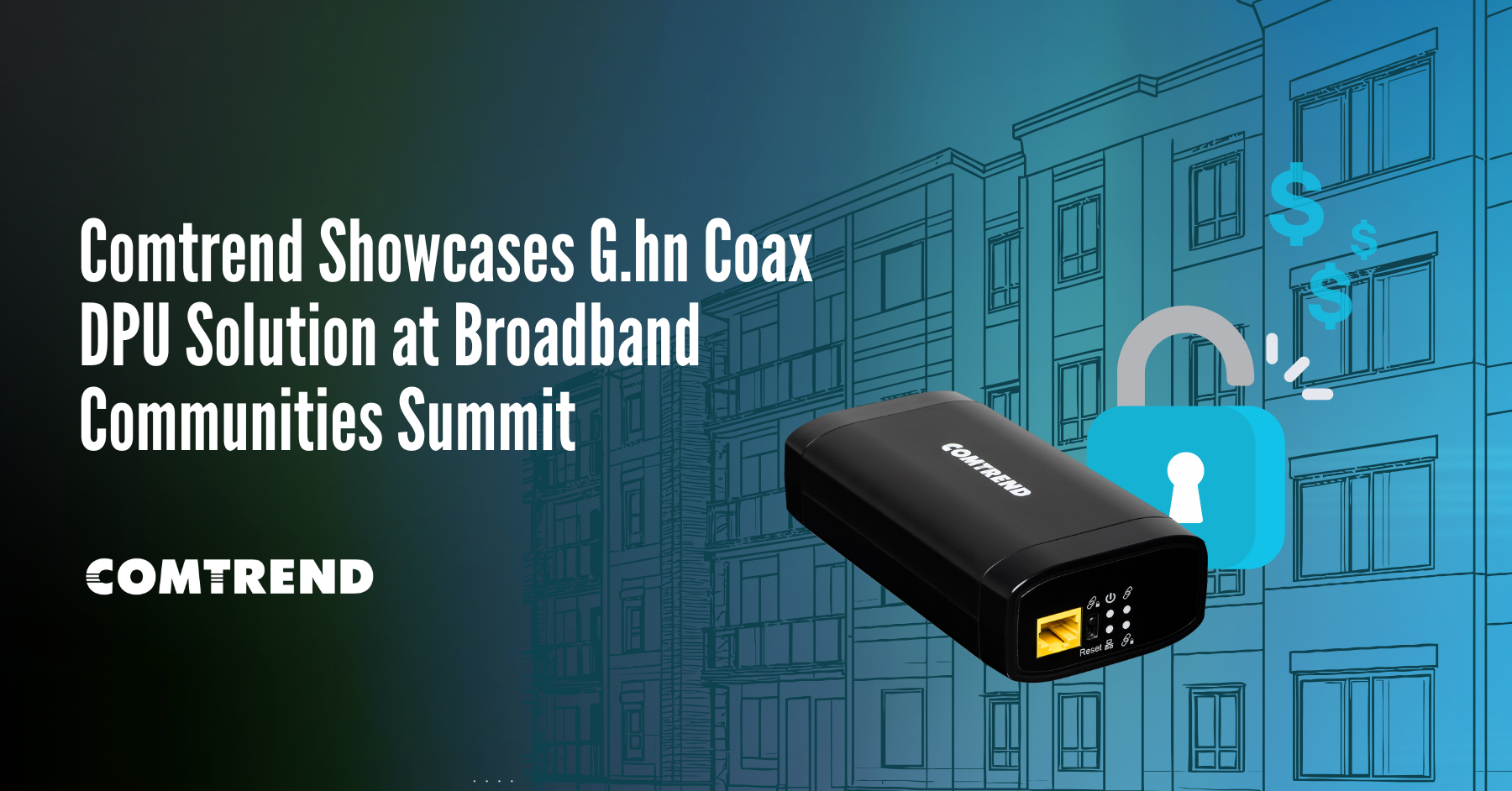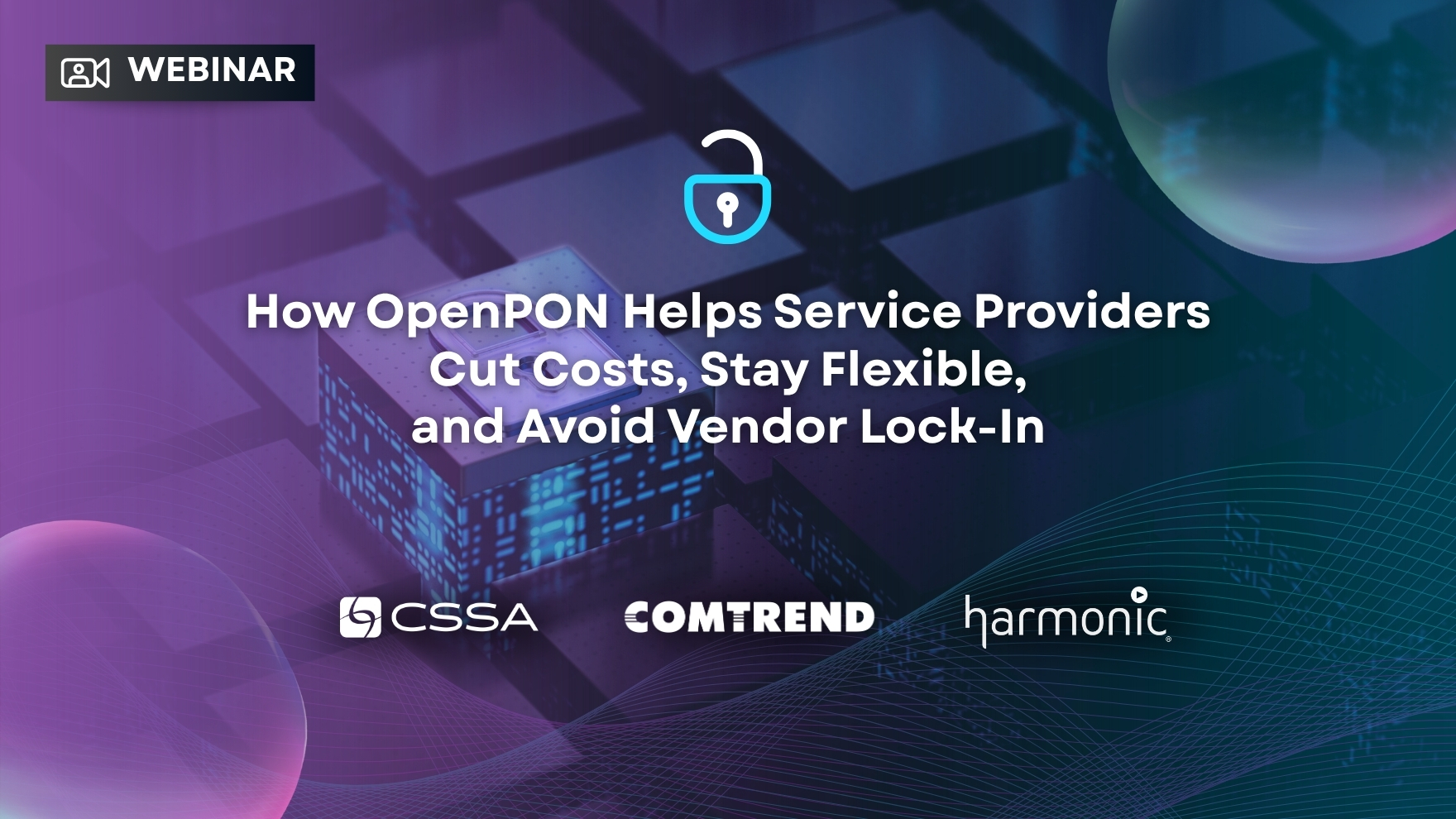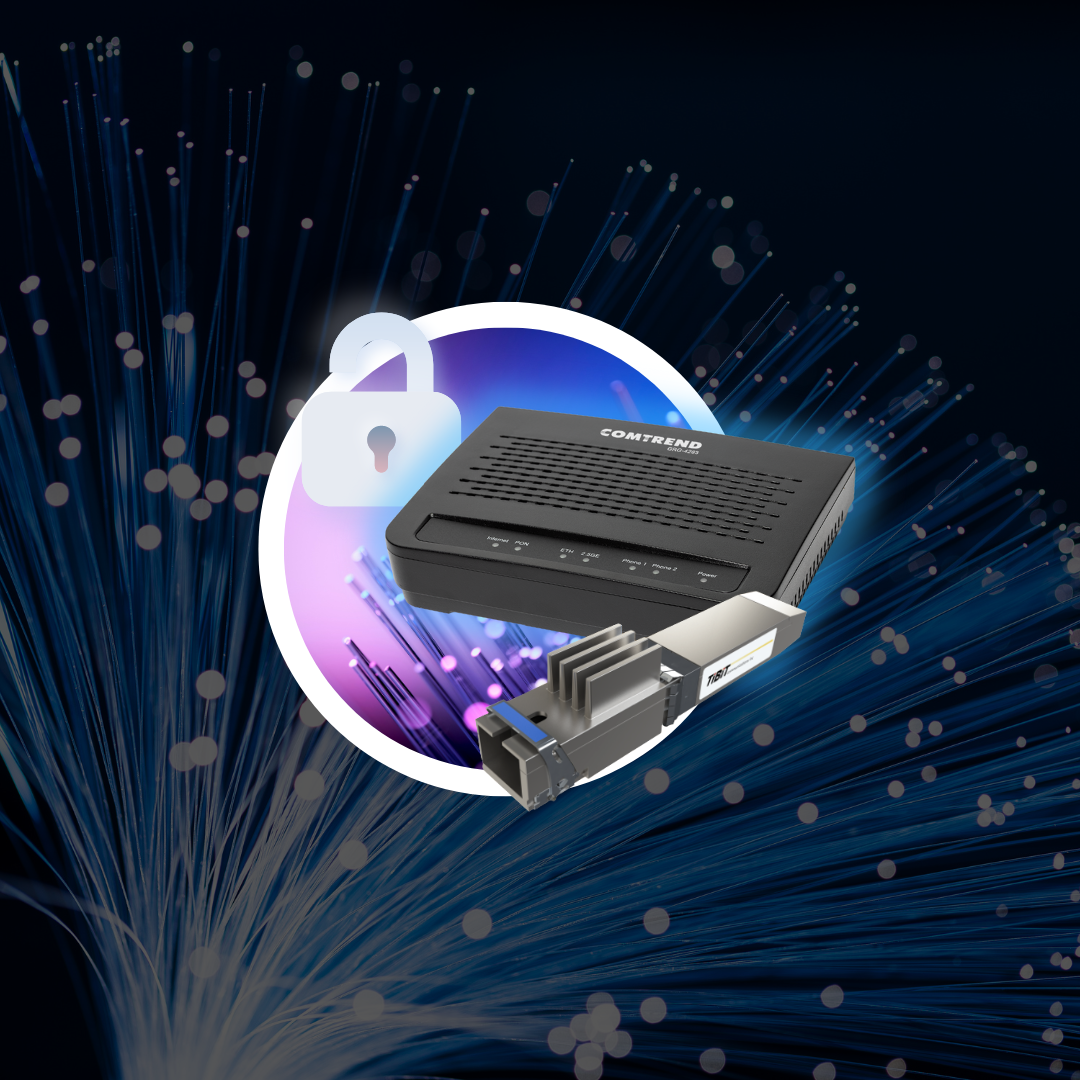Webinar Transcript by Chapter
Note: This transcript has been edited for clarity. Filler words have been removed for easier readability.
Sarah: All right, hello everyone welcome to today’s webinar it is hosted by Comtrend and Fonex and our presenters today are Bradley Joe, Senior Director of Product Strategy and Ab Quinlivan, VP of Business Development at Fonex. I’m Sarah Tomasi, the marketing manager here at Comtrend. Just a few housekeeping notes before we get started. We have everyone currently set on mute if you have any questions please feel free to enter them into the Q&A chat and we will address them as we see them. We would like this to feel more interactive so please don’t hesitate to enter your questions as you have them all right at this point I’ll turn it over to Brad to get started.
Bradley: Thank you, Sarah, I appreciate that. Thanks for the introduction. Just wanted to say thank you everybody for attending, for finding time really, in your busy schedule to basically learn about something that we want to share with you. We believe there’s some different things happening in the industry, sometimes there’s new technologies that make an impact and it’s something that hopefully you will have a better understanding after this particular webinar.
Bradley: So OpenPON is exactly what you see by the title. I’ve given presentations on OpenPON to many people, and asked audiences about whether or not they heard about OpenPON. Not sure you have but if you haven’t you will– the definition is very clear. It’s basically taking what already the whole obvious trend in the Broadband Market is– to bring fiber in you know as the key driver there are other options of course but fiber is key and for many different reasons but the idea today is being delivered in a closed environment and what that means.
I’ll explain a little later and also Ab my partner here from Fonex will explain that, but the bottom line is that it is a capable solution but as all of you know the ability of being more flexible and open is a dream of everyone, every Rural Telco provider Telco provider to basically have many options for you to choose and allow you to get the best Solutions and be able to control your own pricing decisions, being able to have the ability to, you know, lower your costs by being more competitive so those are many benefits of just the word open-architecture. Of course, there’ll be questions which we’ll address in a little bit about some of the concerns about what “open” means, but in general it’s the vision of both what people want today, but also where the industry is going.
So let’s talk about what we’re doing here at Comtrend and in partnership with Fonex. So in my hand here it may be hard to see but you’ll see in the diagram on the screen, this is a is exactly a MicroPlug okay, an OLT on a stick. So that, by definition, just think about what that means. An OLT on a stick the idea that you don’t need a lot of hardware, chassis-type requirements gives you a lot more flexibility because now this SFP+ ONT can now plug into any different switch you have on your network and become that OLT.
So this is just an amazing concept that is being picked up as you see here on the slide you know AT&T, Charter, Liberty Global, a number of tier one providers, major providers are implementing it and also just as important standardizing on this technology. And that begs the question you know– what’s everybody else doing?
So again the exciting part for Comtrend we believe is it’s an opportunity to bring and share this with all of you here on this call but also the market in general– to understand there is another option to deliver access to your customers– and we’ll talk more a little bit about which type of customers and how that could be done. But basically that’s the exciting part that Comtrend is pushing across to all of our customers and hopefully from this particular webinar you’ll learn more about it and also understand that it’s something else you should consider when you make your decision going forward.
Bradley: So with that I’d like to transition to Ab Quinlivan, our partner in Fonex, because we basically looked and decided to work close with Fonex because they provide a key part of the solution and again I’ll let Ab describe that more but they’ve been 30 years, 30-year plus in the market they’ve implemented TiBit in a number of different situations different applications, been doing it since the beginning of TiBit an early partner of this TiBit technology which again, he’ll explain a little bit and then we believe together with our history and our services with Fonex I think basically it’s something that is compelling as a total solution so with that said I’ll go ahead and pass this over to Ab to describe more of OpenPON.
Ab: Great thanks Bradley. So as we look at the networks and and how they’re evolving as to current day as Bradley explained I think we’ve all seen the scenarios on the left where we’ve had proprietary, purpose-built fixed access chassis whether that be– remember the big old chassis that could fit two of them in a large rack, two smaller pizza box type chassis, but they all had one thing in common, again, that they were proprietary and purpose built. And by proprietary I mean that in order to run and operate that Network you had to have vendor A’s chassis in the central office and vendor A’s ONT speaking specifically about fiber to the home networks ONT at the home or the business.
Now what we’ve seen today, as Bradley mentioned, is the evolution to OpenPON where you’re able to take that that small SFP+ as as he as he showed, and place that in any 10 Gig SFP port in your network today and that means it can be in a $170 Microtik or your gold-plated you know top tier OEM chassis from some of the C worlds from Ciena, Cisco, to Juniper and the like, and you can place that SFP not in a chassis specifically for PON but in a in a switch that’s out there working and operating your network today, maybe doing some point-to-point Ethernet or cell site backhaul.
Simply if you have that real estate you can place this OLT there and now have 10 Gig XGS-PON in your network and by the way the space savings you can see there by moving to the 1RU chassis but the energy savings are very real as well. So to start if you ever had a look at a central office electrical bill and you could save 40% of that from the access side of your network I mean that’s real money that you can reinvest in your plant moving forward.
Ab: As we look again on the bottom left there where the traditional architecture and you, know let’s face it I know a lot of you out there– I’ve worked for you know, three out of the four access vendors that are that are prevalent in the United States today, and you know this concept of a proprietary you know fixed-based, access-based architecture on the bottom using all red in order to make your network work, versus a very open, flexible Network that’s not vulnerable to the long lead times and unpredictability of the supply chain as we all saw and were all a victim of during the during the pandemic. Where we were waiting six months and 12 months, or sometimes longer for OLT or ONT vendors to produce the products to put at at the edge to turn up our customers and make the revenue that are all all of our businesses depend on.
No longer in the OpenPON Network are you subject to mandatory price increases and rising subscription fees. Wall Street loves software companies right and we all know the transition from Hardware to software is a big Cornerstone of what some of the traditional vendors, some of the Legacy vendors in the access space are moving to today and it’s because their shareholders want to see that stock price grow and they don’t really care about raising the rates and raising those subscription fee on the backs of their customers today.
As we look again on the bottom left there where the traditional architecture and you, know let’s face it I know a lot of you out there– I’ve worked for you know, three out of the four access vendors that are that are prevalent in the United States today, and you know this concept of a proprietary you know fixed-based, access-based architecture on the bottom using all red in order to make your network work, versus a very open, flexible Network that’s not vulnerable to the long lead times and unpredictability of the supply chain as we all saw and were all a victim of during the during the pandemic. Where we were waiting six months and 12 months, or sometimes longer for OLT or ONT vendors to produce the products to put at at the edge to turn up our customers and make the revenue that are all all of our businesses depend on.
No longer in the OpenPON Network are you subject to mandatory price increases and rising subscription fees. Wall Street loves software companies right and we all know the transition from Hardware to software is a big cornerstone of what some of the traditional vendors, some of the legacy vendors in the access space are moving to today and it’s because their shareholders want to see that stock price grow and they don’t really care about raising the rates and raising those subscription fee on the backs of their customers today.
And ultimately if you’re limited to a single vendor you get the best of what that single vendor’s engineering team can offer you, and you just hope that they’re hiring good engineers and sometimes they do, and sometimes they don’t. Whereas what we’re proposing in the OpenPON network is something where you can take advantage of the best-in world engineering as opposed to the best in blue or the best in red or the best in purple engineering, so that concept is resonating very well in the marketplace today and that’s why that slide that Bradley showed where he showed those tier one vendors moving away from the purpose-built chassis vendors, because they’ve seen the light and many of our tier two and tier three customers have as well. And they’re moving away from these limited skill sets and manufacturing capabilities of a single vendor as opposed to an open system in an open world.
Ab: And you know, this not just in one form factor there’s no limitation to how you imagine this working. As I mentioned before, that single port unit could be a a hardened unit that you put in a a remote cabinet that has no heating or cooling, Telco grade, or it could be something very Enterprise-focused, like a small switch or router that costs under $200 that once you place that OLT that MicroPlug in in that 10 gig housing you’re off and running.
You can quickly scale that up to three ports to 24 ports to 48 ports. We even have customers on the on the MSO side of the world, on the cable operator side of the world retrofitting and the Strand Mount CMTS this old concept of the Strand Mount CMTS DSLAMs where they have MicroPlugs in those, and they sit out there and and take the sleet, the snow, the rain, the hot, the cold, and and they work entirely through it. So there’s an option for you wherever you’re deciding that you might like to start deploying this product and evolve your network forward.
Ab: And the best thing about this, and this is probably the one of the coolest slides we put up there, is the fact that in an OpenPON system, we work, and Bradley and his group work, with all the world’s chipset vendors right. They don’t have to specifically nail it down to one and so that being said the MicroPlug today is interoperable with every known ONT chipset in the world right now.
And the other point in this is that the the MicroPlug is not– Fonex did not design this product right– it was brought into light eight years ago and there are other options for you to buy this MicroPlug from so this is the slide really puts Fonex’s feet to the fire it really puts Comtrend’s feet to the fire and says, hey look as long as we’re serving you correctly and bringing out the right products for you to build your network, then you you’ll stick with us, but if we misstep or don’t stock the right product or don’t stock the the MicroPlug for you or you need different speeds and feeds on an ONT there are other people in this world of OpenPON that you can go to to fill certain needs. And so this really allows Fonex, and the partnership between Comtrend to really listen and have to focus on what our end users are saying as opposed to designing and Engineering products in a vacuum because that’s what our talent-base can do.
So it’s a very powerful slide and this also goes to show you that you know if Huawei or ZTE decide to buy all the Broadcom chip sets again and hold the world hostage on the ONT side, well guess what, we have vendors designing around Cortina, Realtek, Mediatech, and zaram and others, so it’s a it’s it’s very exciting or should be to you that you’ll have choices out there and this 6 to 12 to 18 month lead time on ONT hopefully will never happen again.
So this is this slide really puts Fonex’s feet to the fire it really puts Comtrend’s feet to the fire and says hey look as long as we’re serving your correctly and bringing out the right products for you to build your network um then you you’ll stick with us but if we misstep or don’t stock the right product uh or don’t stock the the MicroPlug for you or you need different speeds and feeds on an ONT there are other people in this world of OpenPON that you that you can go to to fill certain needs. And so this really um allows uh Fonex and the partnership between Comtrend to really listen and have to focus on what our end users are saying as opposed to designing and Engineering products in a vacuum because that’s what our uh our talent-based can do so it’s a very powerful slide and this also goes to show you that you know if if uh Huawei or ZTE decide to buy all the Broadcom chip sets again and hold the world hostage on the ONT side well guess what we have vendors designing around Cortina Realtek Mediatech and zaram and others so it’s a it’s it’s very exciting or should be um to you that you’ll have choices out there and this 6 to 12 to 18 month lead time on ONT uh hopefully will never happen again.
Ab: The other piece of this that makes this unique is that the traditional architecture with the proprietary chassis and the back plane also generally had the concept of a switch card that sat on that particular hardware and that’s where your software was located.
What OpenPON has allowed us to do or what it’s allowed us to be very nimble is that you know we’ve taken a page out of what the Wi-Fi folks did about eight years ago, nine years ago now, where they separated the control plane from the hardware right so no longer did that software have to be run on that specific proprietary, purpose-built chassis anymore, but it could run in any one of your VM architectures server-based, or AWS, or whatever cloud-based container architecture you’re running in. We can adapt and place our software there.
We give you the choice and we’ll show you this in a little bit but you could also run that on the hardware and so ultimately OpenPON gives you flexibility on where you place the software and how you deploy that and we’ll dig a little bit into that into the next couple slides.
So it gives you flexibility in your deployment options right there. It may be the case where you decide to deploy on a particular piece of Hardware a switch or a router that has container capability or that has compute power on that actual chassis, and in that case you can locate the PON controller and the microclimate there, the two primary ways of managing this product but it could be that there is some compute on the hardware like in that second slice the middle slide there and that you’re able to place the microclimate which is the main data, the PM data, and that keeps track of all that up in your your cloud or your servers and then run the PON controller which manages adds, changes, and configurations to the ONTs in the field in that slice number two or you can do this totally virtualized, like you see in that third slice. We actually run a test lab in Montreal Canada where we’ve located our microclimate in PON controller and an AWS Cloud in Seattle Washington so we’re running a network and a lab in Montreal from Seattle, Washington and have full capability change and all security built up around that so it’s very flexible in the way you can deploy and manage this product and it’s fully manageable and built out,
Just as an example, everything we’re talking about and I should have mentioned this earlier, this is all standards-based, XGS-PON we’re not defining you know, not defining the laws of physics here in any way shape or form, so all the same DB loss calculations that you would do on a day-to-day basis when deciding about your split ratios and so forth in the in the field still hold true in this in this next Generation OLT on a on a MicroPlug technology and things like type B protection for your mission critical customers your large Enterprise customers, hospitals, police, stations that might need data access all the time and you’ve painstakingly done the effort to build fiber in you know the west side and also fiber in the east side so so if there’s a cut you’re still redundant we can support that with this type B protection. It’s just a, I mean, there’s many other different ways to support and secure your networks this is just one of the nice applications that we’ like to share that are fully supported in today’s XGS-PON architecture with the OLT MicroPlug.
Ab: And all this is done, probably one of the most important things that operators, service providers want to hear, this is all done with an integratabtle open interface a rest API, that out of the box can operate with the existing OSS systems that are prevalent across the the rural service providers today. And so out of the box functionality is there and obviously a deeper integration if you so choose to take that is is available for you and has been, and we have that. It’s been done across certain customer of ours to one extent or another for the last you know three to four years so the most important thing is, this is a well documented rest API that is standards based and can be easily integrated into existing OSS BSS because it is not proprietary so we don’t have to go ask a you know Legacy vendor, Legacy access vendor, A, B, or C to open up their code so that they could integrate into our OSS it’s just there we have the API documented and published for you guys for your engineering team to decide how to integrate it into your OSS BSS operations.
And we’ve done so and and still kept it very easy and intuitive to manage so you’re going to see a traditional tree on the left where you can choose the different views you’d like to see the different dashboards and network conditions that you would like to have popped up, and ability to monitor statistics and globally set devices do Global upgrades or single OLT upgrades it all really is flexible and depends on what you would like to see.
Just a little deeper dive into that Network tree but more importantly on the next slide you’ll see that the advanced analytics and statistics that we can display looks a lot like what you’re probably seeing and paying a lot of money for from your existing networks and this is all pre-canned, prebuilt screens that we can point you to and that you can implement, and the cost is 0 so no longer are you going to see a network of a thousand subscribers costing a service provider anywhere between $20 and $28,000 a year to operationalize and manage if they want to see statistic ICS and analytics pushed to them like this, we have hundreds of screens that we can share from you that we can help you implement to you know design the dashboards you would like to see.
Ab: And the bottom line is that, you know, especially in the Green Field scenario they’re pretty simple as I mentioned before if you have an existing switch or router out there or you would like some introductions to some of our great white box switch Partners out there, we can do that as well, but we enable you to on a one-off basis, or a or a network-wide basis deploy the MicroPlug and move on to the next Generation XGS-PON simply by slotting an SFP plus rather than buying a whole new set of chassis and adopting a whole new a way of operating your systems and that’s all the way from the XGS-PON ONT to the Wi-Fi 6 Gateway if that’s what you so choose to do.
But ultimately this is this is flexible and easy to stand up and even if you have to install the software from scratch onto a new server I mean we’re talking you know two to four hours and and you guys are up and running.
Now we know that most of you have been operating for you know 100 plus years and that you already have Network in place so on this next slide we understand that we’re going to be probably a choice in a Brownfield application as well and so by simply deploying a passive coexistence module you can now stand up new XGS-PON in conjunction and on the same PON as your legacy GPON right and then eventually transition away from that GPON to XGS-PON as your budgets and as your business plans allow. So it it allows us to to delineate between GPON and XGS-PON without you having to worry about again changing out chassis and worrying about what’s next because ultimately the next generation of 25 gig PON and 50 gig PON is all going to be in a similar form factor as this and you won’t have to worry about the chassis, the backplane, and all the powering that takes place in that.
Ab: And as I mentioned it’s ultimately flexible, I mean we have MicroPlugs that can work in any environment as I mentioned to the extreme on the right on a remote node or a you know a strand Mount. You know heat sink essentially in the MSO fashion or to our more comfortable you know heated and cooled outdoor cabinets and Central offices where we see about 98% of the deployments being done 95% of the deployments being done on that, but that’s really from the The Soup To Nuts states where the MicroPlug fits how it can be deployed and managed. Bradley’s going to take over and then we’ll sync back up at the very end and we’ll go from there so there you go Bradley.
Bradley: Thank you Ab I appreciate that yeah so hopefully–
Sarah: Hey Brad before you begin, there was a question that might relate more to what Ab was just saying. It asks what the typical split ratio or per OLT subscriber count is and if they can do a one to 256?
Ab: So you can’t do a 1 to 256 you can do a 1 to 128 on that and typically and we actually have like in applications where there is like a retirement home or less Mission critical data maybe an MDU type application or deployment you would see service providers or ISPs or MDU apartment managers choosing to do that 128 way split but it, like I said, it doesn’t defy the the laws of physics or DB loss calculations so anywhere from that 1 to 2 to 8 to 16, 32, 64, 128 we support.
Bradley: I appreciate that Ab, thanks. And just adding to what Ab said a moment ago again, we understand that in terms of implementing a new solution for many of you, you currently do have a solution, a number of you probably have one of the number of– let’s call it closed solutions out there, but the key thing to note is that you know that this solution does fit very well in a green field. If you’re going to implement something new you might want to consider an OpenPON based solution. If you’re going to do some type of Green Field situation where you’re doing a forklift or maybe you are interested in just doing a an apartment, as Ab mentioned an MDU of some sort.
The other thing though is you also, back in the Brownfield, you know Ab showed a GPON, if some of you have GPON but you’re aware that going forward that GPON is maybe getting long in tooth because the future is 10 gig and beyond, so AB didn’t mention but be prepared that this technology will be going forward to 25 gig and beyond so it is definitely going to grow in the same OpenPON MicroPlug solution so be aware of that. So on the slide here is why the our organization is talking to all of our customers and and already introducing to as many other people as possible is this concept that all these benefits that Ab laid out and and explained is exciting, it’s different.
And why is it different? Not only because it’s actually straightforward, scalable, flexible, gives you a lot more options again just like open architecture is meant to be, but also it’s a lower CapEx okay if you look at the cost structure we did an analysis on it and here you’re looking at 500 subscribers in year one got it you can see that you know we won’t speak to what solution that you personally might have in your own situations or in a particular, maybe partner Telco that some of you on this call might be working with but the bottom line is that CapEx-wise the cost to get into it is significantly lower and you expect that in an OpenPON solution no doubt about it. You know I don’t think anybody here would be surprised that OpenPON would be more competitive from a CapEx perspective but I know the question would be, is that enough? You know I’m so focused today and committed to my current solution why would I want to do it just to save on CapEx?
The key issue however is OpenPON is significantly lower in the OpEx side that is what Ab alluded to earlier when he mentioned to you that a lot of closed vendors are focused a lot more on software selling manage services and costs are either staying the same or more importantly going up again and again and again those in this call know your costs and in maintaining your current– if you’re using a closed solution how much that cost is but OpenPON by just look at the slide here is incredibly competitive ongoing in year two and beyond so let’s give an example:
I’ve had customers come talk to me and one example is that, let’s say you want to go into a new area that’s currently being overlaid by other competitors today so here you are a Telco trying to be competitive and gain market share but how do you do that? Will you go do that by offering better parental controls you know manage services? Will you go do some type of you know a discount of some sort to try to get in with cost? And if you did how would you do that? Well if you have one of the competitors overlaying with a closed solution A and another competitor coming in already in the market with closed solution B then you have to begin with costs because again as you know the key driver to new subscribers is the price and Broadband speeds. Then what you need to do is be different and OpenPON now gives the ability to a lot of Telcos to be able to come into a a market that’s already developed like this example by this customer and basically come in with different and offer maybe $39.99 versus everybody else at $49.99 because your OpEx is a lot lower so if you’re going to enter a market you want to enter with something different and new.
So again that’s what’s really exciting for Comtrend and why we’re presenting it is because we believe that’s compelling so I’ll let you sit and think about that one when you look at your own costs and do your own comparison and we’d be happy to talk to you further both Ab and I etc. about those costs comparisons and then you can decide yourself.
Bradley: So here’s an example of basically a condo retirement community that uses one of the the models we just described a GPON situation they had a GPON system that was kind of let’s call it flaky, is the way to describe it. This retirement community is actually located south of Montreal I believe, an hour and a half or so and basically they wanted to switch out and it was basically done only within two hours. Now it was pre-placed of these the new units in every single of this 200 unit condo but basically you know it was actually done really quickly within a couple hours just going basic condo to condo to connect in and then what’s more exciting about it is that it really, to this day one and a half years later, there are no service calls on it.
So the technology that we mentioned earlier about AT&T and Charter etc. taking this technology because it actually works and it actually does, you know install quickly and the key issue then is that if those two are true and the CapEx is low and OpEx is extremely competitive this again is something for you to think about and consider.
This was done by our partner AB here at Fonex I don’t know Ab you want to add to that but–
Ab: Yeah no, it was a a traditional vendor being used there, and and like Bradley said said we were able to walk in there with a with a white box, switch out the purpose-built access chassis and within several hours have everybody up and running again now that being said, Brad did mentioned the infrastructure was still in place so we just snapped into the existing split ratios and fiber and and and we were up and running. So very similar what in a condo what you could do in a in a small development or an existing Brown field you might have or if you were developing a green field hedging out and some sort of a celect strategy next to your existing territories.
Bradley: So again just to repeat so our commitment at Comtrend is that we believe OpenPON is the way to go. It’s our commitment as an organization to present this to as many people as possible to build out our vision at Comtrend of Last Mile access. And so we’ve you know historically these are our solution sets the Fiber ONTs, gateways, home networking, Etc. but please note that these these products the the ONTs, the gateways these all are designed to fit into that OpenPON ecosystem. We understand as Ab said, that there are many competitors out there and you might ask you know Comtrend? Well Comtrend, are you selling the OLTs? Why are you presenting OpenPON and talking so much about it?
Well we believe again, that it’s competitive and it is something that is really a direction that many the industry is taking and so our products will fit into that and we believe we’re going to be very competitive and going to provide this infrastructure with Partners such as Fonex and actually even others we’re working on to build out this OpenPON ecosystem.
And very quick one, our ONTs are pretty much the ones you expect we have a 2.5 gig VoIP in our GRG-4283 first one, we have a 10 gig VoIP only in the middle, and then on the right our newest 10 gig with VoIP. So we understand VoIP is going to be a requirement for many of you that are looking for government funding and bead funding so you know our products will be there to support it and we are adding to be announced shortly another device I think I could just prep it just saying, an SFP+ ONT is coming to to the market to allow additional flexibility to plug into any SFP+ Port so basically that’s you know our current road map on ONTs and we’ll continue to develop and support again, this OpenPON.
Sarah: There was a question. It asked, “If the network management system can run speed tests for FCC funding requirements?”
Ab: Yes
Bradley: Awesome, thanks Ab that was quick. Okay, and then finally of course again part of the ecosystem you still need gateways and here’s our line of Wi-Fi 6 gateways, I won’t speak, I don’t want to add too much to that but is Wi-Fi 6 and Wi-Fi 6E and of course later on when seven becomes more standard expect that from Comtrend. And then finally just a brief again this commercial here talking about how our products are Plume-Enabled many of our customers have asked about it not everybody does plume but for those that do, we have made the investment and we support Plume across our line of gateways if you’re looking for that.
Well we believe again, that it’s competitive and it is something that is really a direction that many the industry is taking and so our products will fit into that and we believe we’re going to be very competitive and going to provide this infrastructure with Partners such as Fonex and actually even others we’re working on to build out this OpenPON ecosystem.
And very quick one, our ONTs are pretty much the ones you expect we have a 2.5 gig VoIP in our GRG-4283 first one, we have a 10 gig VoIP only in the middle, and then on the right our newest 10 gig with VoIP. So we understand VoIP is going to be a requirement for many of you that are looking for government funding and bead funding so you know our products will be there to support it and we are adding to be announced shortly another device I think I could just prep it just saying, an SFP+ ONT is coming to to the market to allow additional flexibility to plug into any SFP+ Port so basically that’s you know our current road map on ONTs and we’ll continue to develop and support again, this OpenPON.
Bradley: So to really close off again, the intent of this webinar is just to introduce, for those that haven’t heard about OpenPON, the concept of it and what basically the key points are about its benefits. But in summary, really, it really is easy. We do provide, in partnership with Fonex, if you want to try it out, a trial kit for you to test it out yourself, again up and running really quickly so you can do Hands-On and see how quickly and easy it is to plug and start and get it up and running.
Also by trying yourself you can actually see how minimal effort it is. I know one of the challenges that our customers ask sometimes is well you know, “Brad, it’s going to take more time. I have very minimal IT support right, my technical team is very small and the idea of adding something else on their list is just you know hard to imagine given how busy they are.” But reality is that definitely number one, this is so much better than the idea of fork lifting out, trading for one closed system to another, that’s for sure, but it’s really as Ab showed in his slides pretty much easy to use and again we want you to try and take a look at it yourself.
Remember the TiBit technology which we talked only briefly is really based on a startup that was really developed from people who develop PON technology in the very beginning and built the startup and this TiBit-based technology was designed from the ground to be much easier, to be that disruptor in the market and to change the model. So that’s that, and then finally again the saving money part that CapEx/OpEx I described hands down if you’d like to do an analysis we’d happy to do a quote for one side for you to compare to what you’re doing and do your own analysis of what savings you can make and allow you to be more competitive going forward.
And then finally, with again one other thing that people ask myself and Comtrend is well, “Wow, open architecture, does that mean I have a lot of work to do? That basically I have to integrate these different pieces myself?” Because that is also what you expect in an open architecture world where you think, ah this lot of work, but what’s happened is that by Comtrend working with other partners to do better integration and talk the same story, and also test our products together. Fonex is there, Fonex is our partner as it relates to providing basically tier one support to put it all together so that you only have one throat to choke, one place to really go to to get support and ensure that your solution is up and running without you talk to multiple vendors and get it going.
So in the case of Fonex for example Fonex would drive an implementation and Comtrend would be in our case support of Fonex. You want to add?
Ab: That, you know, that’s a great point and forgive me for not, you know really being a champion of that that sentiment upfront. Fonex is a tier one support, we spent two years with the TiBit MicroPlug in our lab running it on various switches probably five or six different switches proving out the entire the chipset architecture and interop. We interop with over 50 ONTs in the world theme to make this product and this ecosystem gel together. So it was two years in our own labs before we brought it out commercially to actually sell to our customers so we have a great expertise and have been selling this now and working with the TiBit MicroPlug for over four years so it’s pretty incredible what that team’s been able to do from a tier one support and Engineering standpoint.
Bradley: So again these are our contacts, if you have any questions for us the key issue is, you have to see it to believe it, so it’s very simple to either set up another direct presentation, We’d be happy to talk to you directly, AB or myself or others on our teams but the key issue is actually what we would love for you to actually call us out, is it really that simple? Is it really that quick? There’s only one way to find out, to reach out and you know have the opportunity for you to take a look at it again, something at minimum, even if you’re not planning to do anything in the short term, because again the idea of looking at access and making changes probably scares everybody a little bit because it takes work but at least you get a chance to learn about what’s possible going forward. So with that next thing Sarah so this is a great time for anybody to try to stump myself or Ab on any question.
Sarah: We had one question you guys kind of touched on it but maybe you can address it a little bit more directly. They were wondering, “what kind of expertise is involved in implementing this kind of solution?”
Ab: Yeah, that’s a good question, typically in this day and age, with the central office technicians in, the wherewithal a lot of the IT staff has even if it’s a short IT staff has knowledge of open and standard VM or container based server architecture. It would just take a little bit of that and then in regards to the access and to be able to work through the GUI interface again, it’s simply logging into an IP address and and moving that forward to configuration, to configure and again the tier one support and the initial turn up if you want us to be there, Fonex is there to help you with that initial turn up. A lot of folks choose to try to you know do it themselves and when they get through it, they’re good, they call us and said, “Hey it’s up and running everything looks cool but I have some specific questions about this, that, or the other.” But we’re happy to do it that way, or happy to jump in physically or virtually to help you getthose first turn-ups up and running
Sarah: We had one person wanting to see the contact information so I’ll leave this up as we’re going through the rest of the questions.
There’s a question on if you support beyond XGS-PON and what that upgrade path would look like?
Ab: That’s probably one of the best questions I’ve heard because it’s almost a commercial or it’s almost a total advocacy for what we’re saying.The next generation of of 25 gig and 50 gig PON will also be SFP based whether that’s a SFP Plus or 28. I believe 25 and 50 gig or SFP 28 based so they’ll plug into the the switches and routers that you have in your networks that are already evolving to that next generation of interface right so again, as your core evolves now if you lock into, you know, this OpenPON concept so will your Access Network so they go hand-in-hand.
Sarah: Awesome well I think that was it for questions so we’ll end it here. Thank you all for your time and joining us for this webinar. Brad, Ab, do you have any last thoughts before we leave it here?
Bradley: Just wanted to, hopefully, everybody here learned something new. If you haven’t heard of OpenPON and again, even if you decide not to do something in the short term, it’s something to at least be aware of, an industry direction. Everybody wants to be open, that’s kind of everybody talks about, it but I think OpenPON is something, it’s time to investigate if you haven’t already. So I appreciate everybody’s time to to learn more about it. Thank you all, right thanks again.
Contact Us to Learn More About OpenPON!
Fill out the form below to Request a Demo, Ask Questions, or Request Additional Information!

